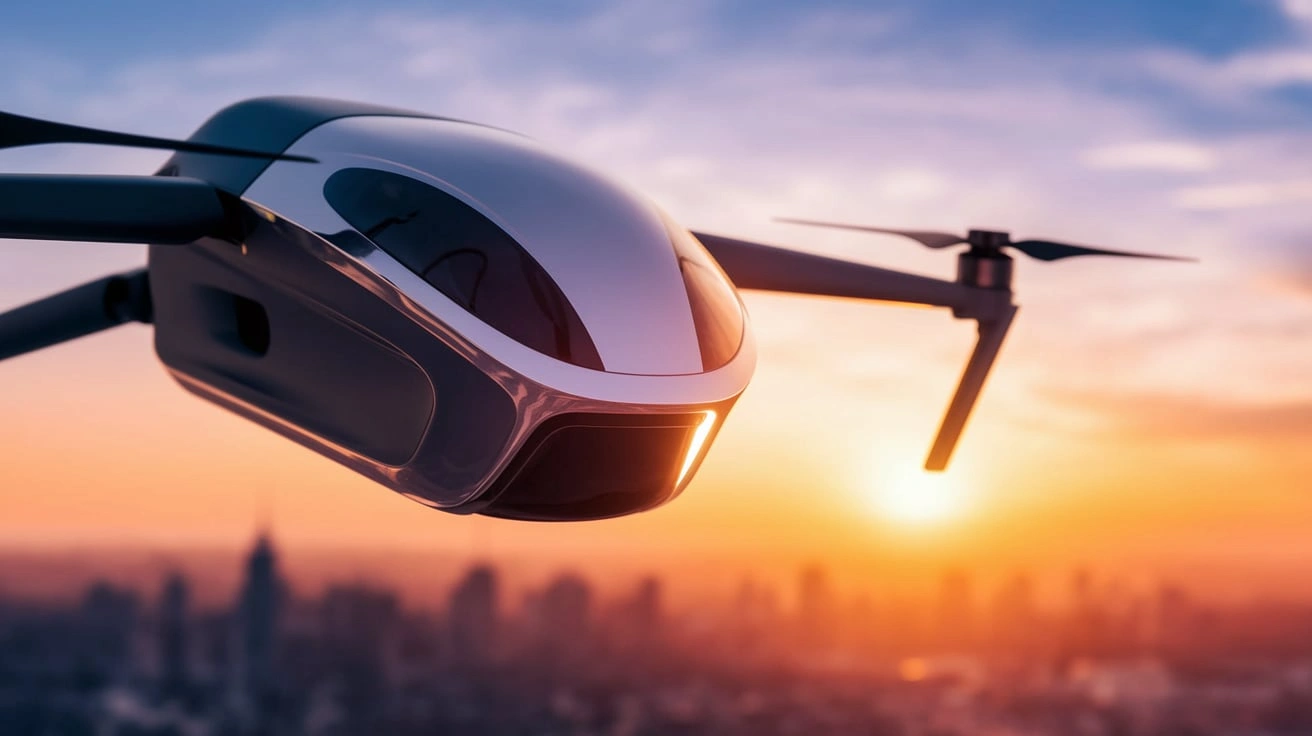AI Impact Analysis on the UAV (Drone) Industry
Autonomous Ascent: How AI is Reshaping the Future of the UAV Industry
The integration of artificial intelligence into the unmanned aerial vehicle (UAV) industry is catalyzing a significant transformation across both commercial and defense sectors. As drones evolve from remotely piloted systems to intelligent, semi-autonomous and fully autonomous platforms, AI is becoming the core enabler of this evolution. The industry is witnessing a shift from basic waypoint navigation and operator-driven missions to complex, data-rich operations where UAVs can independently detect, analyze, and act upon information in real time.
AI's influence is visible in several transformative areas within the UAV ecosystem. Autonomous navigation and obstacle avoidance, powered by deep learning and computer vision, have become standard in many next-generation UAV platforms. Real-time image recognition and target identification enable drones to serve as mobile, intelligent eyes in the sky, capable of supporting a wide range of missions from surveillance and precision agriculture to emergency response and military reconnaissance. AI-driven swarming behavior is also emerging as a critical area, especially for defense applications where groups of UAVs can operate in coordinated formations to confuse enemy systems, gather data collaboratively, or perform distributed attacks.

Current market trends show that AI-powered drones are driving the next wave of growth within the UAV sector. Demand is increasing across industries such as energy, logistics, public safety, and environmental monitoring, as AI capabilities reduce human intervention and increase operational efficiency. In defense, autonomous UAVs are becoming central to strategies involving manned-unmanned teaming, reconnaissance missions in GPS-denied environments, and electronic warfare operations. This shift has prompted governments to increase R&D funding and led private companies to invest in advanced AI-algorithms tailored for UAV mission planning, pathfinding, and threat recognition.
Request AI Impact Analysis on UAV (Drone) Industry : https://www.marketsandmarkets.com/pdfdownloadNew.asp?id=662
Growth projections for the AI-enabled UAV segment are significantly outpacing the general drone market. Over the next five to seven years, AI-powered UAVs are expected to experience double-digit compound annual growth rates. Factors driving this growth include the increasing deployment of drones in urban air mobility concepts, smart cities, and last-mile delivery, all of which depend on real-time decision-making and adaptive navigation. The scalability of AI-driven UAV services is also leading to expanded use cases in disaster response, border patrol, asset inspection, and wildlife conservation, where human oversight is either limited or impractical.
Strategically, the industry is experiencing a shift toward modular and software-defined platforms. Hardware is increasingly becoming a delivery mechanism for intelligent software, allowing drone manufacturers to tailor AI applications to specific use cases. This shift favors flexible architectures that support frequent software updates and mission-specific payloads, reducing costs and improving mission effectiveness. In addition, there is growing emphasis on edge computing within UAVs, enabling real-time AI processing onboard rather than relying on cloud-based computation, which is crucial for latency-sensitive applications and environments with limited connectivity.
Key players in this evolving landscape include both established defense contractors and fast-scaling tech startups. Companies like Northrop Grumman, Lockheed Martin, and Elbit Systems are incorporating AI into their tactical drone platforms, focusing on autonomous ISR, strike, and EW capabilities. On the commercial front, DJI continues to dominate the consumer and enterprise UAV market with intelligent flight modes and vision-based navigation. Emerging companies such as Skydio, Anduril, and Shield AI are pushing the envelope with fully autonomous drones capable of navigating complex environments without GPS or human input. Additionally, major cloud and AI firms like NVIDIA, Intel, and Microsoft are investing in UAV AI frameworks and processors to capture the growing demand for onboard intelligence and AI model optimization.
Looking forward, the integration of AI into UAVs is set to redefine airspace management, aerial data services, and future warfare doctrine. As regulatory frameworks adapt to autonomous flight and beyond visual line-of-sight operations, AI will become a key determinant of which companies and nations lead the next generation of unmanned aviation. The race to develop safe, scalable, and intelligent drone ecosystems is underway, and artificial intelligence is at the center of this transformation.
Related Report :
GET A FREE SAMPLE
This FREE sample includes market data points, ranging from trend analyses to market estimates & forecasts. See for yourself.
SEND ME A FREE SAMPLE





